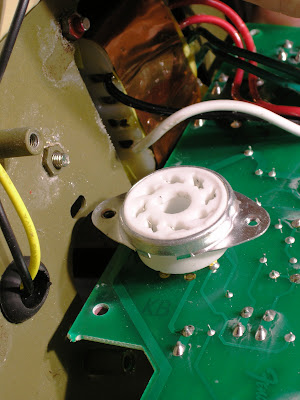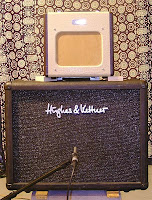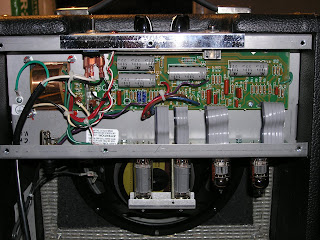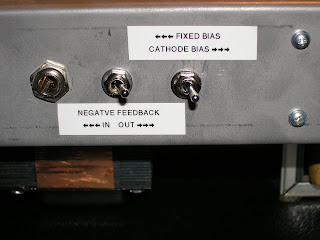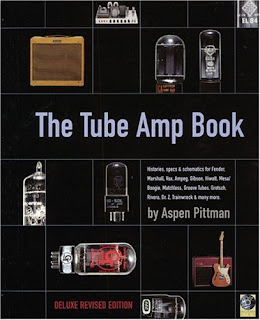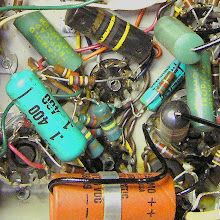Here's a look at the 12DW7 / ECC832 tube I used in the Champion 600 12DW7 Mod Part 1 .
Starting with the pin out diagram:

You can see from the diagram that, like other 12A*7 tubes, the 12DW7 has two triodes. Each triode has three connections - pins 1,2,3 and 6,7,8 respectively.
On most 12A*7 tubes (12AX7, 12AT7, 12AY7, 12AV7, 12AU7) the two triodes
in a single tube have identical characteristics.
In a 12DW7 the two triodes are different.
The section listed as Section 1 on the data sheet uses pins 6,7 and 8 and has characteristics identical to one half of a 12AX7.
The one listed as Section 2 uses pins 1,2 and 3. This section is identical to one half of the lower gain 12AU7 .
As an illustration, here's a Traynor YB1A with a 12DW7 in the first valve position:

Input 1 feeds the 12AU7 half of triode and input 2 feeds the 12AX7 half. The input is about 120 mV RMS and the meters are reading the output voltage from each of the two triodes.
The left hand meter reads 6.3 V for the 12AX7 stage output - that's a gain of 53 (6.3 V output/120 mV input).
The right hand meter reads 1.6 V for the 12AU7 stage output - that's a gain of 13 (1.6 V output /120 mV input).
So you can see the most obvious difference when swapping a 12DW7 for a 12AX7 is going to be a lower overall stage gain with the 12DW7.
This is also apparent if you look at the Amplification Factor in the data sheet (highlighted in yellow).

Amplification Factor is related to the gain of the stage the triode is used in. It should not be thought of as the actual gain of a stage - it is actually the maximum possible gain in a stage designed to use that triode. As you can see in the measurements in the YB1A above, the actual stage gain for the 12AX7 was just above 50, even though the Amplification Factor for a 12AX7 is 100. The reasons for this are too complicated to get into here, but I'll post them independently at a later date. Suffice it to show that the 12AU7 stage has a significantly lower gain than the 12AX7 one (the combined gain for the two stages will be roughly the same as if you substituted a 12AY7 for the 12AX7).
The second and slightly more subtle difference is evidenced in what is listed as the Grid Voltage (highlighted in blue). Doubling this number will give a very rough sense of the possible input headroom available to the stage. It a very inexact number but good enough for the sake of illustration.
For Section 1 then the input headroom would be 4 volts. For Section 2 it would be 17 volts. A typical 12AX7 stage can output over 4 volts with an input of only 70 millivolts. At 120 millivolts it easily clears 6 volts:

Many guitars can output over 500 millivolts. And those voltages are in RMS - the peak to peak voltage is 2.828 times the RMS voltage (peak to peak voltage is what you really have to look at if you're concerned with the headroom of a stage).
So you can easily see that if the second stage is also a 12AX7 triode and there is no attenuation between stages, the second stage is going to be clipped. A 12AU7 has 4 times the input headroom of a 12AX7 (even more if it's run into the nonlinear part of it's curves). So using a 12AU7 as a second stage has some advantage if you're looking to keep things clean.
Plugging a 12DW7 into a Champion 600 actually places the 12AU7 section before the 12AX7 section, which is why the first stage is the one I rebiased in Part 1 of this posting.












